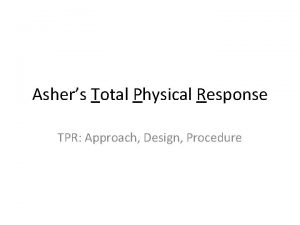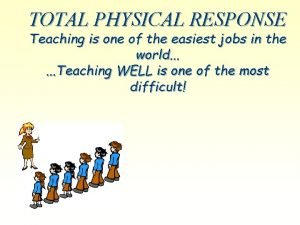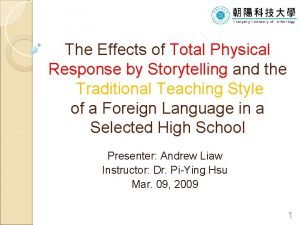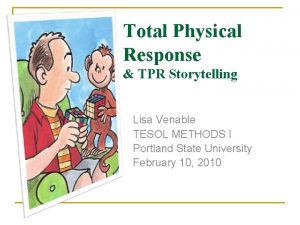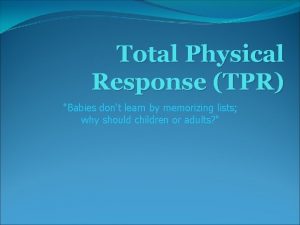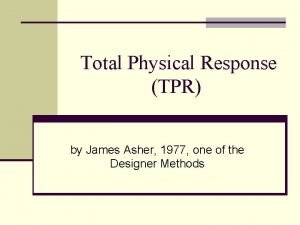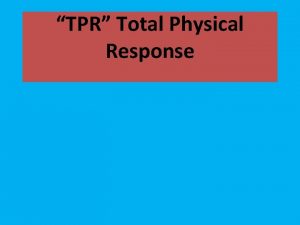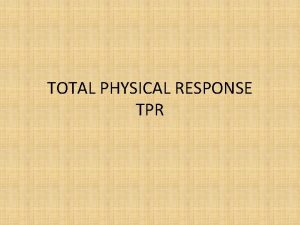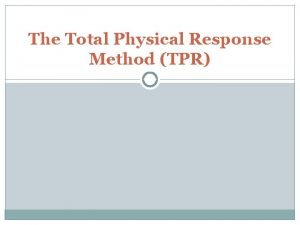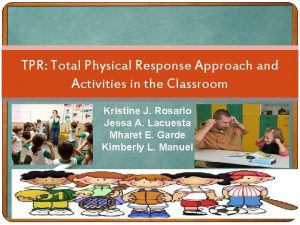Ashers Total Physical Response TPR Approach Design Procedure





- Slides: 5

Asher’s Total Physical Response TPR: Approach, Design, Procedure

TPR: Background • Asher’ TPR is a Foreign lang teaching method through coordination of speech comprehension and action. • Tracing theory: the more memory connection traced, the more memory association is recalled, through rote repetition, verbal rehearsal and motor activity. • Successful adult SLL as a parallel process to child FLA: speech commands, physical responses/movements, i. e. , adults should recapitulate MT acquisition processes • Comprehension-based FLT proposals*: …learner stress • Humanistic concern for affective factors in language learning—reduce learner stress/create positive mood.

TPR: Approach • Language (views/assumptions) as composed of grammatical structures and vocabulary /lexical items (nouns, imperative verbs), internalized as chunks/prefabricated patterns. • Learning: Stimulus-response model/view of verbal learning in children. 3 FL learning hypotheses* facilitate or inhibit: innate bio-program …, brain lateralization …, stress reduction/affective filter….

TPR: Design • Objective: teach oral proficiency/basic speaking skills through use of action-based drills in imperative form. • Syllabus: sentence-based, grammatical and lexical teaching items, initial attention to meaning, linguistic form taught inductively. • Learning/teaching activities: oral imperative drills(role plays, commands/questions) to elicit physical actions, reading and writing. • Learners: listen attentively, watch, and respond physically to commands as well as produce own novel combinations of items. • Teachers: initiate, model, present new materials; direct interactions /turn taking; controls input/exposure and provides feedback*…. • Instructional materials: teacher’s voice, actions, gestures, common classroom objects, and student Kits/on specific situations.

TPR: Procedure/technique/class proceeds as follows: • Review/warm up: teacher introduces method (L 1/L 2); • Teacher says New command(s)/Vocabulary items and does the action(s); students follow teacher’s example; • Practice: Teacher questions/students gesture/point; • Role reversals: commands/series of—actions/sequence; • Reading(acting out) and writing: items/sentences; • N. B. FL/MT acquisition: listen/watch/respond to.
